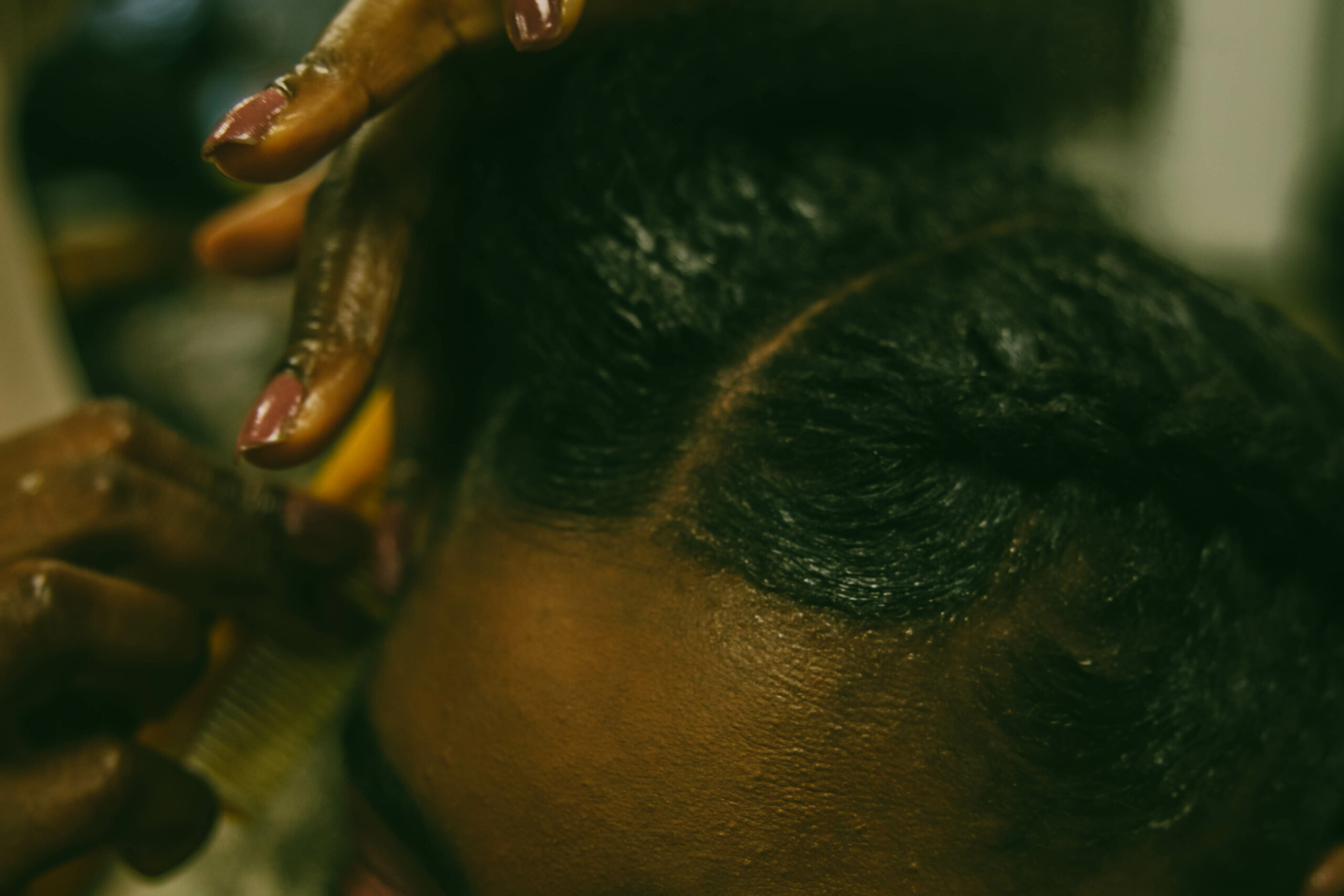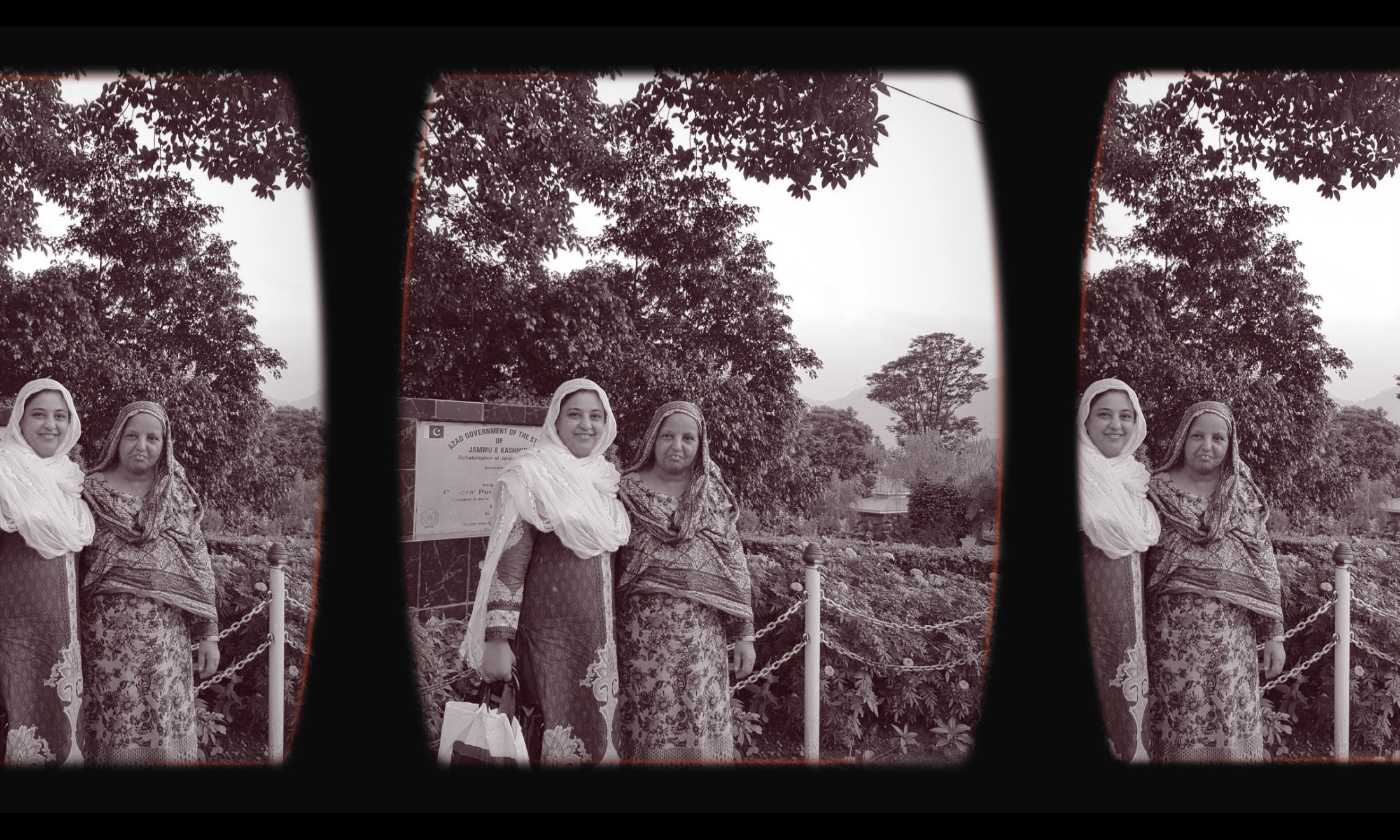
image by Michelle W
Everyone has a secret – mine is that I’m bald. But have you ever seen a completely bald South Asian woman, proudly walking around the streets of London? Black women maybe, white women occasionally – but never South Asian women.
I lost my hair at the age of 14. In the back of my mind, I always knew it would happen one day. My mother and eldest sister lost their hair around the same age. Currently incurable, alopecia areata is a hereditary, autoimmune disease which develops when your immune system mistakes healthy cells (like hair follicles) as foreign; your body stealthily attacks them until eventually, they stop producing hair. My body was attacking me. I was attacking myself. It’s been a difficult insecurity to overcome. Some men I’ve been with could deal with it, others were cruel. I was cruel to myself too for a time, trying to take control in whichever way I could. If my body wouldn’t let me keep my hair, forcing me to be bald, then I would punish it in retaliation. Exercising for two hours a day, sneakily not eating, relentlessly chastising myself over every calorie in that tiny hobnob…
The path to acceptance has been a long and winding road. Sometimes it’s a steep hill, other times it feels like I’m going in circles, but most of the time it leads me to the right place. When I was first diagnosed by my doctor, I clearly remember her words. She told me that the worst thing I could do was to “stress out or worry about it” as it would likely make my hair fall out even faster. I laugh now when I reflect on that. What was she thinking? Asking the 14-year-old me to not worry about this incurable disease that made me feel like a freak? Not worry about the sense of shame, paranoia and turmoil as I sat with my hairbrush each night, painstakingly counting every single strand of hair, hoping that I wouldn’t be bald, and that nothing was actually happening to me?
Fortunately, I had the intellect to find other, healthier, means of dealing with what was happening to me. Yes, I stressed and worried, but by the age of 18, I had finally found a sense of balance at the gym as an outlet for this, and not as a tool of self-punishment. Over the years, I began admitting to others what I had (alopecia) and didn’t have (hair). I started speaking more openly to friends, strangers and love interests about it. I began writing about it and painting self-portraits. I felt braver, stronger, and happier.
But there is still something holding me back. I still feel like I’m hiding something. As a child, I could understand why it was a protective measure to wear a wig – kids can be harsh and I can only imagine the serious bullying (as opposed to the milder kind I experienced) that would have taken place if I was the token “school baldy”. But at the age of 27, why do I still have to hide the fact that I’m bald and wear a wig in front of extended family, friends, colleagues and the rest of the world?
Speaking about it seems fine, but showing them seems like a painful form of exposure, that I can’t fathom going through with total strangers. Bravely, I used to joke with my mum about walking around our local town centre one day, free from the shackles of my Peruvian, virgin-remy-human-hair lace-front. I would relish the idea for a sweet moment, and imagine the feel of the breeze on my little bald head. She would laugh with me, but I could sense the horror behind her eyes. It was impossible, unimaginable. It’s blasphemous to be a South Asian woman with no hair.
It’s blasphemous to be a South Asian woman with no hair
Sometimes I would think things would be easier if I wasn’t South Asian. “Just do it, take it off and walk around outside,” said my black and white friends. “It’s fine, no one will care, you’re beautiful just the way you are!” South Asian girls I have mentioned my condition to have never once expressed the same thoughts. In all honesty, I’ve barely told any of them because of the stigma that, I’m ashamed to say, I’ve internalised and can’t break free from.
Many early anthropological studies on non-Western societies focus on the social meaning of hair; for South Asian women it’s a symbol of cultural identity, beauty and sexuality; it’s a social preoccupation. Traditional Indian manuscript paintings have been filled with images of Indian women sitting in palaces combing their hair into waist-long, thick plaits; actresses in Bollywood movies have further cemented the expectation of South Asian women to fulfil this beauty criteria – when we have every scene the heroine of a film with frizzy hair? Let alone with no hair! Brown Girl Magazine published an article in 2014 listing “Hair Like Silk” as one of the top 8 reasons South Asian women are considered so beautiful. But it was hard to define myself as beautiful when I no longer possessed the entity that held such special powers. I remember beginning to resent shampoo adverts, filled with beautiful desi women with long, silken tresses, never failing to remind me that they were ‘worth it’ and I no longer was.
I thought for a time that if I put serious time and effort into disentangling the complicated taboo between hair and South Asian women, I would finally find the key to liberating myself from my lace-front. I started reaching out to organisations I thought could help with research. When I approached Gary Sherwood from the National Alopecia Areata Foundation, based in San Rafael, California, U.S.A., in 2014, he said: “In my three years with NAAF, I have hardly ever heard from a South Asian woman with alopecia areata and I have to believe there may be cultural reasons for this”. I experienced a similar result when I approached a lecturer who explored social topics in the East at King’s College London’s Department of Social Science, Health and Medicine later that year.
When I asked whether she knew of any academics working on topics surrounding alopecia, I found out that alopecia was barely discussed amongst social scientists, the lecturer told me: “I don’t know anyone who worked on alopecia. I come across the issue very rarely and if so, mostly in medicalization literature”. Alopecia is rarely looked at through a non-medical lens, the social and mental impact on suffers isn’t researched and written about enough to allow for any sort of normalisation.
Even in the plethora of articles urging women to reclaim their natural beauty that have saturated women’s magazines in recent months, never have I come across an article that deals with bald South Asian women. In a desperate search for self-love I recently stumbled upon @thebaldiemovement on Instagram – finally, my feed was filled with women who had no hair, just like me. But I rarely see any representation from my ethnic background. Why are South Asian women so reluctant to be bald and proud?
I sat on the tube this morning surrounded by posters of hair loss clinic testimonials “It’s fantastic!” says Susanne, while 44-year-old Rohit smiles into the camera showing off his new head of hair. Where are the South Asian women? If you’re a bald South Asian woman, please stand up!









